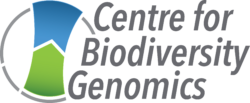Genomics
At the forefront of DNA sequencing research and technologies while serving as the world’s largest analytical hub for DNA barcoding
The Unit Manages
World-Leading Genomics Facility

An Analytical Hub for DNA Barcoding
High-Throughput Methods

Unrivalled Sequencing Capabilities
The Genomics Unit’s unique capabilities include the employment of high-throughput methods to gather DNA barcodes from vast numbers of specimens with various levels of DNA preservation and across a variety of biological life. Establishing such capabilities requires the development, optimization, and validation of laboratory protocols and operating procedures for every analytical step to ensure accurate and reproducible results for the thousands of samples processed each day. The capacity of the Genomics Unit to analyze specimens is unrivalled. As of 2023, in addition to thousands of metabarcoding and metagenomic samples, the lab processes more than three million specimens each year – from a tissue sample to DNA barcode record.
Research & Development
Advancing Species Identification & Discovery
Scientific Impact

Supporting Global Research Efforts
The Genomics Unit’s most recent achievement is tied to the International Barcode of Life (iBOL) Consortium’s global biodiversity research program, BIOSCAN. It is the largest initiative ever undertaken in biodiversity genomics that is on target to deliver on its promise to assemble a DNA barcode library for two million species of animals, plants, and fungi by 2028. The CCDB has generated nearly 75% of the twenty million DNA barcode records that are now available. The Genomics Unit also curates extracted DNA from over sixteen million specimens which represent nearly half a million species. The globally unique resource aids researchers around the globe to probe deeper into understanding of ecology, taxonomy, and evolution of biodiversity on the planet. In addition to the DNA archives and its involvement in BIOSCAN, the scientific impact of the Unit is evidenced by the number of papers published by its researchers and collaborators; Google Scholar indicates that it has been cited for analytical support in nearly 2000 publications.

